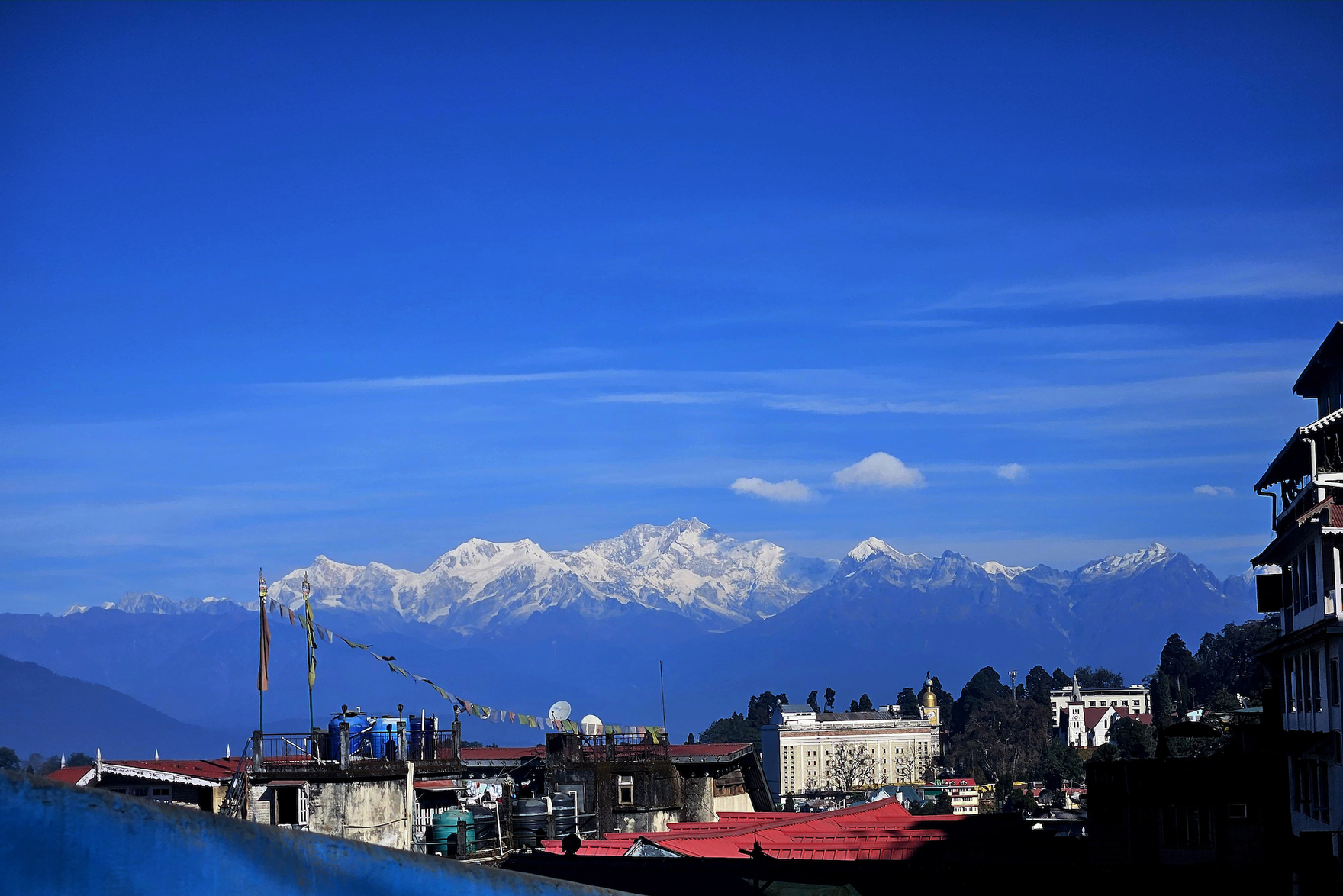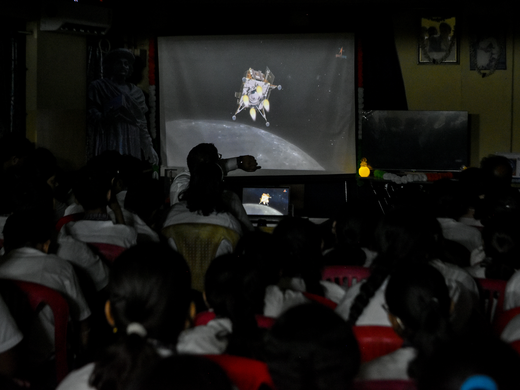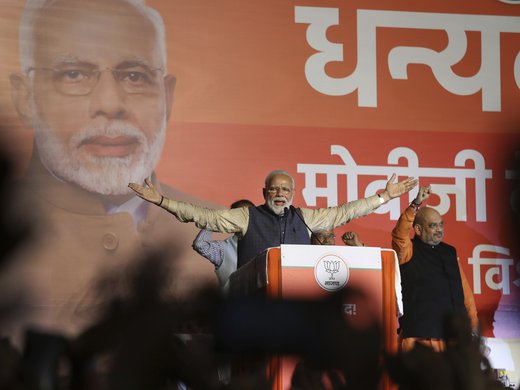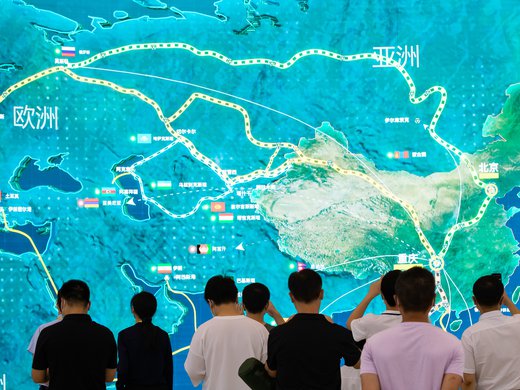India, with its unparalleled civilizational depth and pluralistic traditions, stands as something of an anomaly in contrast to the liberal democratic model that serves Western societies and has come to dominate global political discourse.
While liberal democracy emphasizes individual rights, adversarial politics and universalist principles, India’s philosophical and political heritage is steeped in a more holistic and context-sensitive ethos. Rooted in the ancient concept of dharma, this framework emphasizes balance, collective well-being and ethical governance that adapts to the nuances of time and circumstance.
Reimagining India’s democratic identity through the lens of dharmic democracy envisions a model that blends India’s cultural ethos with modern governance and that can co-exist with the Western paradigm.
Western interpretations of India and its governance have frequently relied on the framework of liberal democracy, often neglecting the deep-seated cultural and philosophical foundations that shape the nation. This analytical misalignment has led to superficial assessments of India’s democratic practices and impeded the development of more nuanced and productive relationships between India and the West.
A genuine engagement with India necessitates a shift in perspective, transcending the limitations of Western frameworks to embrace the concept of dharmic democracy. This concept reflects India’s core ethos, in which pluralism, ethical responsibility and a balance of rights and duties inform governance and societal structures. Recognizing and respecting this distinct approach would offer the West a more accurate understanding of India’s political and cultural dynamics, thereby facilitating stronger and more authentic partnerships.
In this article, I will explore the concept of dharmic democracy, not as a critique or alternative model to the Western liberal order, but rather as a lens through which to understand India’s unique identity and also contribute to broader global democratic discourse.
A Different Kind of Democracy: The Dharmic Approach
At the heart of dharmic democracy lies the ancient and multifaceted concept of dharma, a cornerstone of Indian philosophy that provides a framework for ethical living and governance. Derived from the Sanskrit root dhri, meaning “to uphold” or “sustain,” dharma signifies the principles that sustain balance and order in both individual lives and society. It is not a rigid doctrine but a dynamic and contextual principle, emphasizing harmony among individuals, communities and the environment. Unlike prescriptive legal codes or ideological dogmas, dharma recognizes the fluidity of circumstances, advocating for justice and duty tailored to the specificities of time, place and context.
In the context of democracy, dharma shifts the focus from narrow individualism to collective well-being. While liberal democracy is anchored in the Enlightenment ideals of individual rights, universal principles and rational governance, it also prioritizes the autonomy of the individual, often placing individual rights at the centre of its legal and political systems. This approach has fostered freedoms and protections in many societies, but can also lead to challenges such as excessive individualism, where personal interests overshadow the collective good.
Dharmic democracy explores individual rights in the context of shared responsibilities. It posits that true freedom is realized not in isolation but in the interplay of rights and duties, where individual aspirations are harmonized with societal needs and obligations to future generations. This balance is integral to the dharmic world view, which sees society as an interconnected whole rather than a collection of competing interests.
The pluralistic nature of dharmic democracy is another key distinction from its Western liberal counterpart. Rooted in India’s historical experience as a cradle of diverse cultures, faiths and philosophies, dharmic democracy inherently values co-existence and the inclusion of these principles in every aspect of the state and individuals’ daily lives. This pluralism is not merely a political or social principle but also a deeply ingrained aspect of dharma, which acknowledges that truth and virtue can manifest in multiple forms.
By contrast, in the West, the principle of secularism is rooted in the historical context of separating church and state, a response to centuries of religious conflict and power struggles between ecclesiastical authorities and monarchies. This separation was seen as necessary to ensure that governance remained neutral, preventing any single religious institution from wielding undue influence over the state. However, such a model, while effective in its historical and cultural context, does not fully resonate with the Indian ethos, which holds a fundamentally different relationship between religion, politics and society.
The dharmic approach to secularism does not demand the exclusion of religion from public life but instead emphasizes the equal respect and accommodation of all faiths. Indian secularism, therefore, does not seek to erase religious identities from governance but ensures that the state treats all religious traditions with impartiality. This distinction is reflected in India’s constitution, which guarantees the freedom of religion and recognizes the diverse spiritual fabric of the nation. Rather than enforcing a rigid separation of religion and politics, the Indian model fosters a framework where religious diversity is celebrated and the ethical teachings of different traditions can inform public life and governance without dominating it.
Another point of divergence lies in dharmic democracy’s focus on contextuality versus universality in addressing governance principles.
Western liberal democracy often relies on universal norms and principles that are applied uniformly across diverse cultures and societies. While this approach has its merits in establishing common standards, it can struggle to accommodate the complexities of culturally and historically diverse nations such as India. Dharmic democracy, by contrast, is inherently contextual, seeking to adapt governance to a society’s specific needs, traditions and circumstances. For instance, dharma mandates respect for natural resources, recognizing humanity’s responsibility to protect and preserve the environment for future generations. This perspective contrasts sharply with the short-term focus often seen in liberal democratic systems, where policy decisions are frequently shaped by electoral cycles rather than long-term sustainability.
Both models face sets of challenges. Liberal democracy, for all its strengths, has been criticized for fostering polarization and economic inequality, as adversarial politics and market-driven policies often exacerbate divisions within society. Dharmic democracy, while offering a more holistic approach, grapples with the ambiguity of dharma, which can be interpreted differently across India’s diverse population. This interpretational flexibility is both a strength in accommodating diversity as well as a potential weakness should it be misused or manipulated by political actors.
Despite their differences, both models aim to uphold democratic ideals of representation, accountability and governance for the public good. Understanding dharmic democracy not as an antithesis to liberal democracy but as a complementary approach rooted in India’s unique civilizational ethos is key to appreciating India’s democratic framework. Western policy makers and observers often misinterpret India’s system through the lens of liberal democracy, leading to the erroneous perception that it is less open or free.
Historically, India was home to some of the earliest known republics, such as Vaishali, which operated under systems of self-governance and collective decision making.
However, India’s democracy operates on principles that are both deeply ethical and pragmatically inclusive, reflecting a balance between individual freedoms and collective responsibilities. Understanding these distinctions is thus not a critique of the Western liberal democratic model but an acknowledgment of differing philosophical priorities. By recognizing these distinctions and complementarities, the West can better understand India’s approach to governance, paving the way for more nuanced and effective engagement in global diplomacy and policy collaboration.
India’s Political Dynamics Through a Dharmic Lens
India’s political dynamics, when viewed through a dharmic lens, reveal a legacy of governance deeply rooted in ethical principles and community-centric practices. The concept of dharmic governance, embedded in India’s ancient political systems, emphasizes harmony, balance and the collective good — principles that find resonance even in contemporary democratic practices. Historically, India was home to some of the earliest known republics, such as Vaishali, which operated under systems of self-governance and collective decision making. These ancient republics, known as ganas and sanghas, were marked by assemblies where decisions were made through dialogue, consensus and a shared commitment to justice — a process reflective of dharmic principles. Similarly, the panchayat system, which empowered local communities to resolve disputes and manage resources, embodied the dharmic ethos of decentralization, shared responsibility and contextual justice.
However, this indigenous model of governance faced significant disruptions during periods of foreign Islamic invasions and British colonial rule. The imposition of British legal and administrative frameworks replaced India’s organic, community-driven systems with rigid, hierarchical and alien structures. These colonial frameworks prioritized centralized control and uniformity over the pluralistic and adaptive nature of dharmic governance. The end result was a disconnection between India’s political systems and its cultural ethos, a legacy that continues to influence governance and policy even in the post-independence era.
In modern India, traces of dharmic governance persist, albeit within a framework largely shaped by Western liberal democratic ideals. India’s democratic practices today reflect a unique blend of indigenous traditions and modern governance. The continued importance of local governance through panchayati raj institutions, enshrined in the constitution, demonstrates the enduring relevance of decentralized, community-centric decision making. Similarly, the Indian Parliament’s emphasis on debate and consensus building echoes the deliberative practices of ancient sabhas and samitis.
Dharmic principles also offer valuable insights into addressing some of India’s most pressing challenges, such as corruption, inequality and communal tensions. At the core of dharma is the notion of ethical responsibility, which can serve as a powerful counter to corruption by fostering a culture of accountability and moral leadership. By prioritizing duties alongside rights as ensured in the Indian constitution, dharmic democracy shifts the focus from individual gains to collective welfare, mitigating the systemic inequality that arises when policies disproportionately benefit the powerful. Furthermore, the pluralism inherent in dharma provides a framework for resolving communal tensions. Rather than viewing diversity as a source of division, dharmic principles emphasize co-existence and mutual respect, recognizing the interconnectedness of all communities within a shared ethical framework.
Dharmic Democracy as a Framework for Foreign Policy
Dharmic democracy offers a transformative framework for shaping India’s foreign policy, rooted in the ancient ethos of Vasudhaiva Kutumbakam — the idea that “the world is one family.” This principle, deeply embedded in Indian thought, emphasizes interconnectedness, mutual respect and the pursuit of harmony on a global scale. In contrast to the zero-sum competitive approaches often seen in contemporary international relations, the dharmic world view advocates for cooperation, ethical responsibility and the equitable sharing of resources.
India’s historical world view has always prioritized the notion of co-existence and harmony, as reflected in its diplomatic tradition of non-alignment during the Cold War. Rather than aligning with one power bloc over another, India sought to maintain strategic autonomy while promoting dialogue and peace, embodying the dharmic principle of balance and impartiality. In today’s multipolar world, this approach remains relevant as India positions itself as a bridge between competing powers and a champion of the Global South. By advocating for a more just and equitable international order, India continues to reflect the dharmic emphasis on contextual justice and the well-being of all.
A dharmic approach to foreign policy also aligns closely with pressing global challenges such as climate change and environmental degradation. The principle of dharma emphasizes harmony with nature and intergenerational equity, recognizing humanity’s responsibility to preserve the planet for future generations. India’s leadership in climate action, such as its pivotal role in the Paris Agreement and its ambitious commitments to renewable energy through initiatives such as the International Solar Alliance, reflects these values.
Moreover, India’s role as a voice for the Global South highlights its commitment to inclusivity and justice in global governance. Through initiatives such as the Coalition for Disaster Resilient Infrastructure and its leadership in multilateral fora such as the Group of Twenty and BRICS (Brazil, Russia, India, China, South Africa, Egypt, Ethiopia, Indonesia, Iran and the United Arab Emirates), India seeks to ensure that the perspectives and needs of marginalized and developing nations are not overlooked. These efforts echo the dharmic principle of collective well-being, wherein the interests of the vulnerable are protected and uplifted.
The dharmic emphasis on peace building further reinforces India’s potential to act as a global leader in conflict resolution and diplomacy. Drawing from its civilizational ethos of dialogue and reconciliation, India has historically advocated for peaceful solutions to international disputes, exemplified by its mediation efforts in the past and its contributions to UN peacekeeping missions. By promoting a dharmic approach that prioritizes ethical conduct, mutual understanding and long-term harmony, India can offer an alternative vision of global leadership that transcends the transactional and power-centric paradigms of the present.
The exploration of dharmic democracy alongside the Western liberal democratic model reveals not a rivalry, but a profound opportunity for mutual understanding and growth. By appreciating the dharmic emphasis on contextual justice, ethical responsibility and pluralism, Western policy makers and observers can move beyond reductive judgments about India’s democracy and recognize its unique strengths. As Mahatma Gandhi once wisely said, “The best way to find yourself is to lose yourself in the service of others.” This quotation encapsulates the essence of dharmic democracy: a system where governance is not an end in itself but instead represents a means to serve society, nurture diversity and ensure the well-being of all.
Ultimately, dharmic democracy is not a deviation from democratic ideals but rather an evolution of them that reflects India’s distinct civilizational ethos and its ability to adapt governance to the realities of its diverse and dynamic society.



